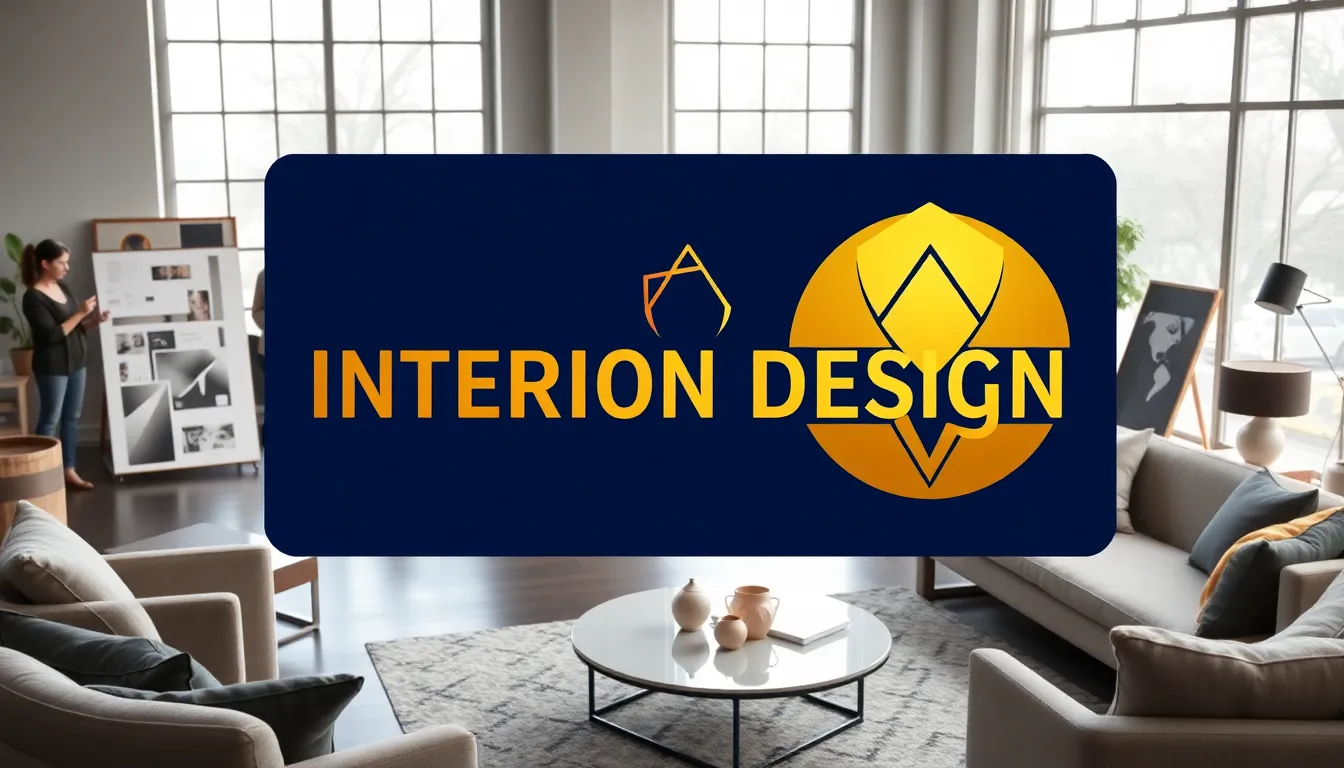Ever walked into a place and thought, “Wow, this design really speaks to me”? That’s the power of a well-crafted logo. In the world of interior design, where aesthetics reign supreme, your logo isn’t just a pretty face, it’s your brand’s identity, a first impression that can make or break potential client connections. Think of your logo as the crowning jewel in your design toolkit: it should evoke emotion, capture your unique style, and surely inspire envy. So, grab your sketchbook (or just a good cup of coffee) and let’s jump into the world of interior design logos that are as stylish as they are memorable.
Table of Contents
ToggleUnderstanding the Importance of a Logo in Interior Design

A logo is more than just a symbol: it’s the cornerstone of your brand identity. In the competitive landscape of interior design, an unforgettable logo helps you stand out. When clients see your logo, it should trigger a sense of trust and professionalism, as well as a spark of creativity.
Firstly, a strong logo communicates your values and style before a client even steps foot in your office or website. An elegant logo can suggest sophistication and luxury, while a playful logo might appeal to innovative, bold design ideas. Essentially, your logo is your brand on display.
Also, consistency is key in branding. A logo establishes a recognizable identity that can be carried through business cards, websites, and all marketing materials. This uniformity enhances brand recall. In a nutshell, a good interior design logo acts as a beacon for attracting your target audience.
Types of Logos for Interior Design Businesses
Choosing the right type of logo is vital for effectively communicating your brand’s identity. Let’s examine a few popular styles that are often the go-to for interior designers:
1. Wordmark Logos
These logos focus solely on the business’s name, employing unique typography to create a visual identity. Think of brands like Google or Coca-Cola. A well-executed wordmark can reflect the personality of your design philosophy.
2. Lettermark Logos
When your business name is lengthy, a lettermark can simplify things. Using initials or abbreviations, these logos are sleek and easily recognizable. Consider how firms like HP or CNN use this style effectively.
3. Iconic Logos
Using a symbol or icon in tandem with or instead of text gives you creative freedom. An icon can convey complex ideas succinctly. For instance, an abstract representation of a chair or a house can instantly connect your brand with interior design.
4. Combination Marks
These combine both text and icon elements, offering versatility. This style often provides the best of both worlds, allowing for a descriptive yet creative approach. Consider brands like Adidas, which uses language and imagery effectively.
Inspiration Sources for Your Logo Design
Feeling stuck? Finding the right inspiration can be the spark that ignites your design process. Here are a few sources to explore:
1. Nature
Look outside. Nature’s patterns and colors can inspire a logo that reflects organic aesthetics or sustainability in design.
2. Architecture
Architectural forms and structures can translate beautifully into logo designs. Think about the shapes and lines that resonate with your own style.
3. Art and Culture
Art movements like Art Deco or Minimalism can provide rich inspiration. Reflecting cultural elements can also help extend your brand personality.
4. Competitor Analysis
Although imitation isn’t the goal, looking at what others in your niche are doing can provide insights into effective designs and what resonates with your target audience.
Design Elements to Consider
Crafting the perfect interior design logo involves several design elements:
1. Color Palette
Colors evoke emotions. A palette that resonates with warmth may draw clients looking for cozy designs, while cool hues might attract a more minimalistic audience. Think carefully about your color choices, they should align with your brand ethos.
2. Typography
The choice of font can convey various tones. Serif fonts suggest tradition, while sans-serif fonts lean toward modernity. Artwork should also be considered, because the typeface you select speaks volumes about your design approach.
3. Simplicity
Strive for simplicity in your design: overly complex logos can be hard to recognize. A design that’s straightforward often sticks in the mind longer.
4. Versatility
Your logo should work across various mediums. Whether appearing on a business card or billboard, a successful design maintains visibility and appeal at all sizes.
Tips for Creating a Memorable Interior Design Logo
Creating an impactful logo doesn’t happen overnight. Here are some strategies to guide you:
- Research and Brainstorm: Understand your audience’s demographics and preferences. This knowledge can shape your logo’s concept.
- Seek Feedback: Before finalizing, get opinions from peers or potential clients. Their insights may reveal unexpected perspectives you hadn’t considered.
- Hire a Professional Designer: While DIY can be tempting, a professional can translate your vision into a polished logo that embodies your brand ethos flawlessly.
- Test for Longevity: Trendy designs may fade with time. Aim for a logo that stands the test of time, resonating with future generations.
Case Studies: Successful Interior Design Logos
Let’s look at a few interior design businesses that nailed their logo:
1. Kelly Wearstler
Her logo, simple yet elegant, encapsulates the luxurious aesthetic of her work. It uses refined typography that speaks to her high-end design philosophy.
2. Studio McGee
A combination mark featuring both the name and an icon, this logo is modern, clean, and incredibly versatile across different platforms, reflecting the approachable style they embody.
3. Jonathan Adler
This logo features playful typography and vibrant colors, capturing the essence of Adler’s whimsical yet sophisticated designs perfectly and enhancing brand recognition instantly.




